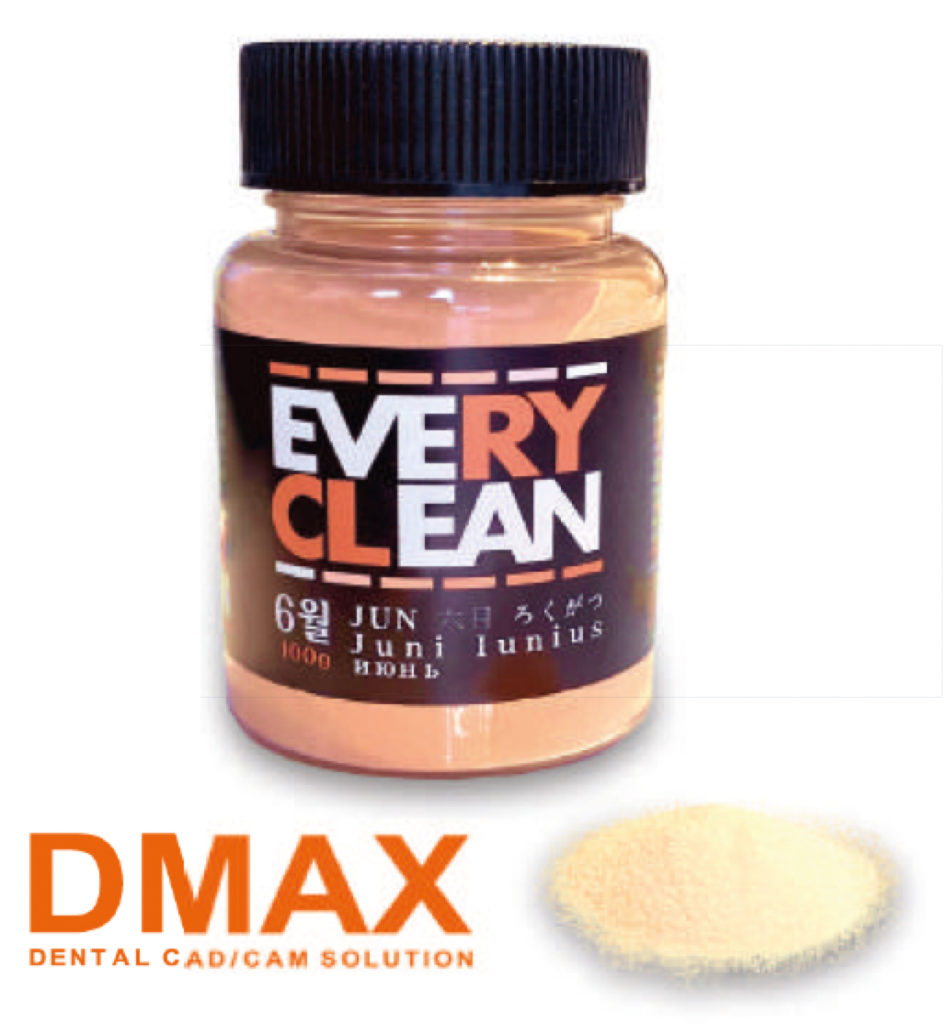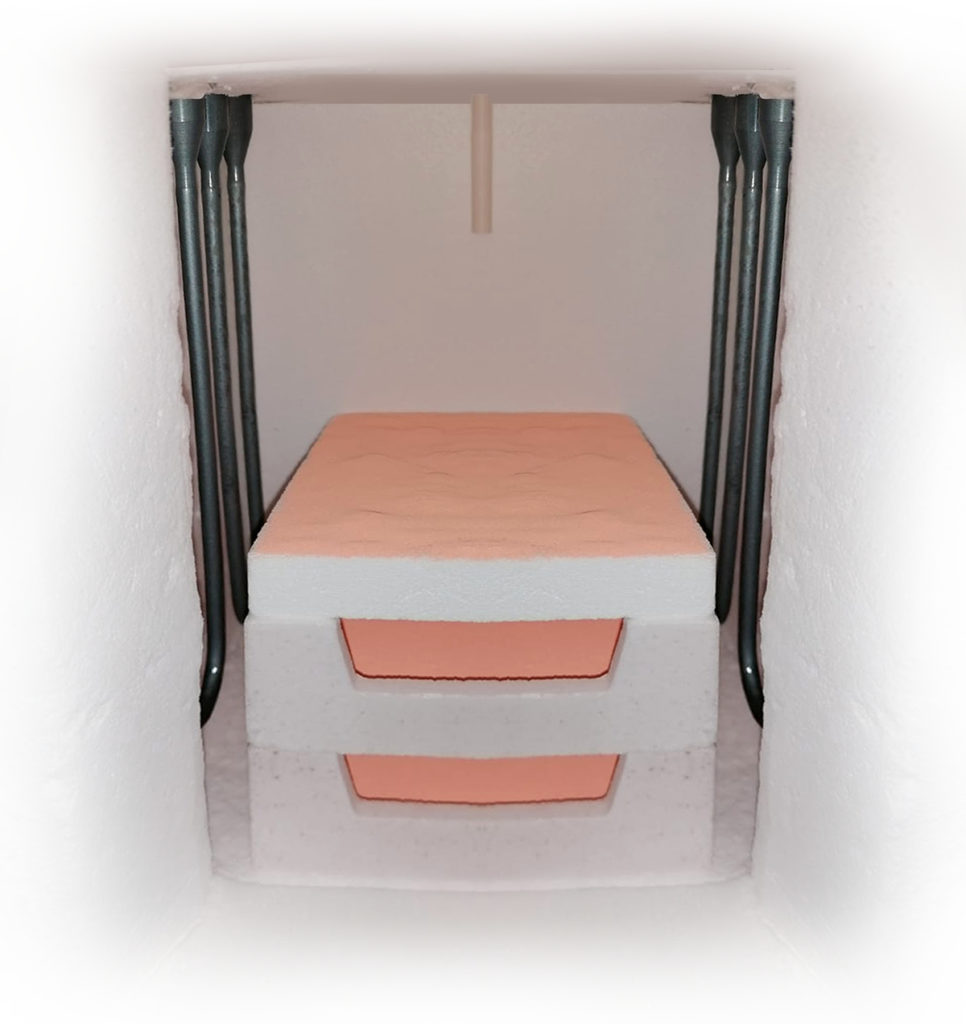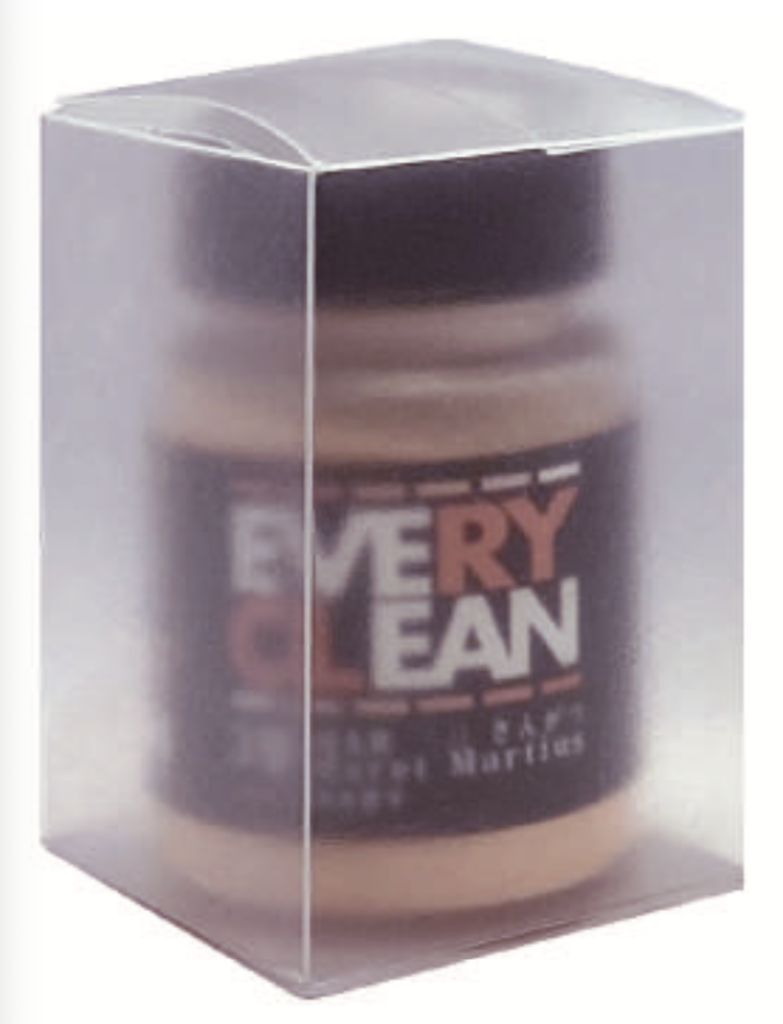DMAX EVERYCLEAN CLEANING POWDER
Many dental laboratories are affected by this unnoticed: The gradual process of discolored and less translucent zirconium oxide restorations after the sintering process. This is caused by metal ions.
There are two possible reasons for this:
Dyeing liquids contain high concentrations of metal ions. These are applied to the surface of the material by brushing or dipping and react in the sintering firing; they are incorporated into the microstructure and thus produce their coloring effect. However, the ions also evaporate during sintering and enter the furnace atmosphere in this way. After the furnace has cooled down, these particles are deposited in the firing chamber and sintering tray. During the next sintering process, the impurities originating from the furnace atmosphere dissolve again and react with the zirconium oxide, resulting in discoloration or color deviations of the restorations.

Heaterconductor made of molybdenum disilicide (MoSi) – The silicon contained in it forms a glass-like protective layer on the surface of the heatsealing band and thus prevents oxidation of the molybdenum. Over time, crystals of silicon dioxide, SiO2 or quartz form in this molten glass, which grow into islands and eventually cover the entire surface of the heatsealing band. A frequent cause of this is that in standard sintering programs the heatsealing band often remains below its performance limit or does not reach the maximum temperature. Due to temperature changes of the heatsealing band from "cold" to bright red glowing within seconds, these crystals are subject to high mechanical stresses during heating processes. Isolated microparticles are blasted out and thrown into the furnace chamber. A single SiO2 particle is sufficient to produce a strong yellow coloration on zirconium oxide over a large area.
Another danger During the sintering process, silicon ions dissolve out of the heat conductors and enter the furnace atmosphere. Due to the high temperature in the firing chamber, the silicon is converted into a gaseous aggregate state and thus reacts with the zirconium oxide restorations. Yellow-green discolorations on the surface of the restorations are the result after sintering. This problem does not arise with silicon carbide (SiC) heat conductors, as no particles are released into the furnace atmosphere, causing discoloration of the sintered material. Furnaces with these heating conductors have the advantage that the restorations can be sintered without a sinter tray lid. In direct comparison to molybdenum disilicide (MoSi) heating elements, the entire energy can be introduced into the sintered object here, such as emerging thermal radiation, which is otherwise attenuated by the use of the cover.

1. 1: Ions dissolve from heating conductors and dyeing liquids at high temperature
1. 2: They react with the zirconium oxide. During cooling, the ions are deposited in the firing chamber.
1. 3: During the next sintering process, the ions dissolve again...
1. 4: ... and react with the zirconium oxide. Discolorations develop.
The cleaning powder DMAX® EVRYCLEAN provides a remedy and restores color-fast, translucent zirconia restorations by binding residues from staining liquids and other impurities within the firing chamber in the powder and thus purifying the furnace atmosphere.
DMAX® EVRYCLEAN Compared to the zirconia restorations, cleaning powder has a much larger and more reactive surface on which the impurities present in the furnace atmosphere, such as staining ions, are deposited. DMAX® EVRYCLEAN thus offers ideal conditions for clean and consistent color results with best translucency after sintering.
SIMPLE APPLICATION
After removing the sintered beads DMAX® EVERYCLEAN filled into the sintering tray. If several trays are used, the quantity is divided accordingly. If a lid is used, also cover it thinly with EVERYCLEAN. Place the filled sintering tray(s) in the oven chamber. Then simply start the regular (8h+) sintering program with the highest final temperature.
After cooling, the powder is removed from the sinter tray and from the sinter lid with a brush. After successful cleaning, EVERYCLEAN turns a whitish-yellow color. The used powder can now simply be disposed of with the household waste.

TIP. SINTERPERLS
Sintered beads also absorb contamination over time and should be regarded as consumables. If sintering beads turn yellowish-beige or begin to stick together, they should be replaced with new ones. Heavily contaminated sintering beads can lead to localized discoloration of the zirconium oxide frameworks. When using DMAX® EVERYCLEAN the sintered beads should therefore also be renewed directly.

DMAX® EVERYCLEAN
- No yellow or green discoloration of the sintered objects - Full trancelucency is achieved
- Cleans the combustion chamber and sintering bowls from all contamination
- Always color-fast and clean sintering results
- Filling quantity: 100g